SOLO SHOW MARINA DE CARO
Movimientos para guiar el desconcierto
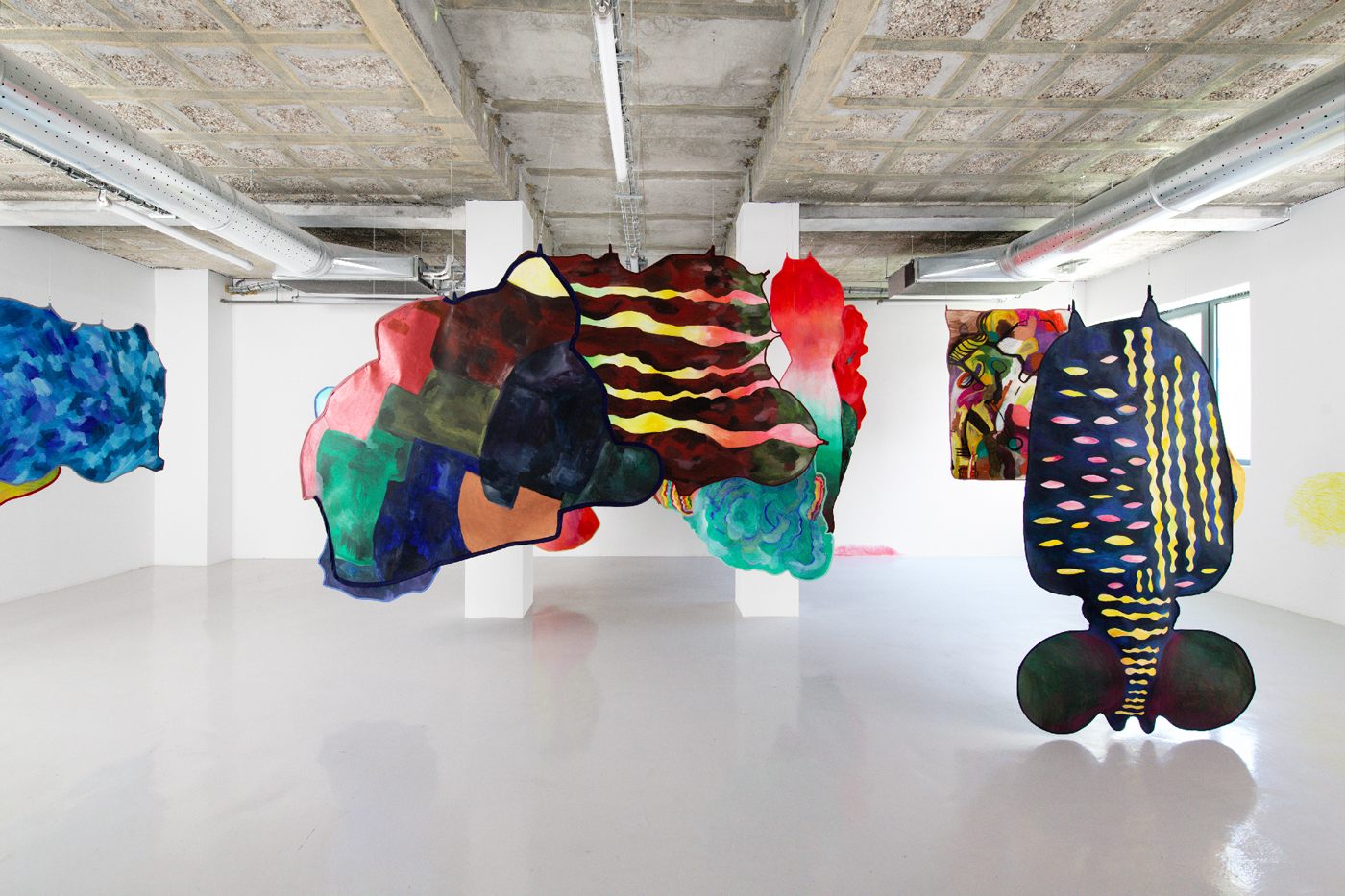
SOLO SHOW MARINA DE CARO
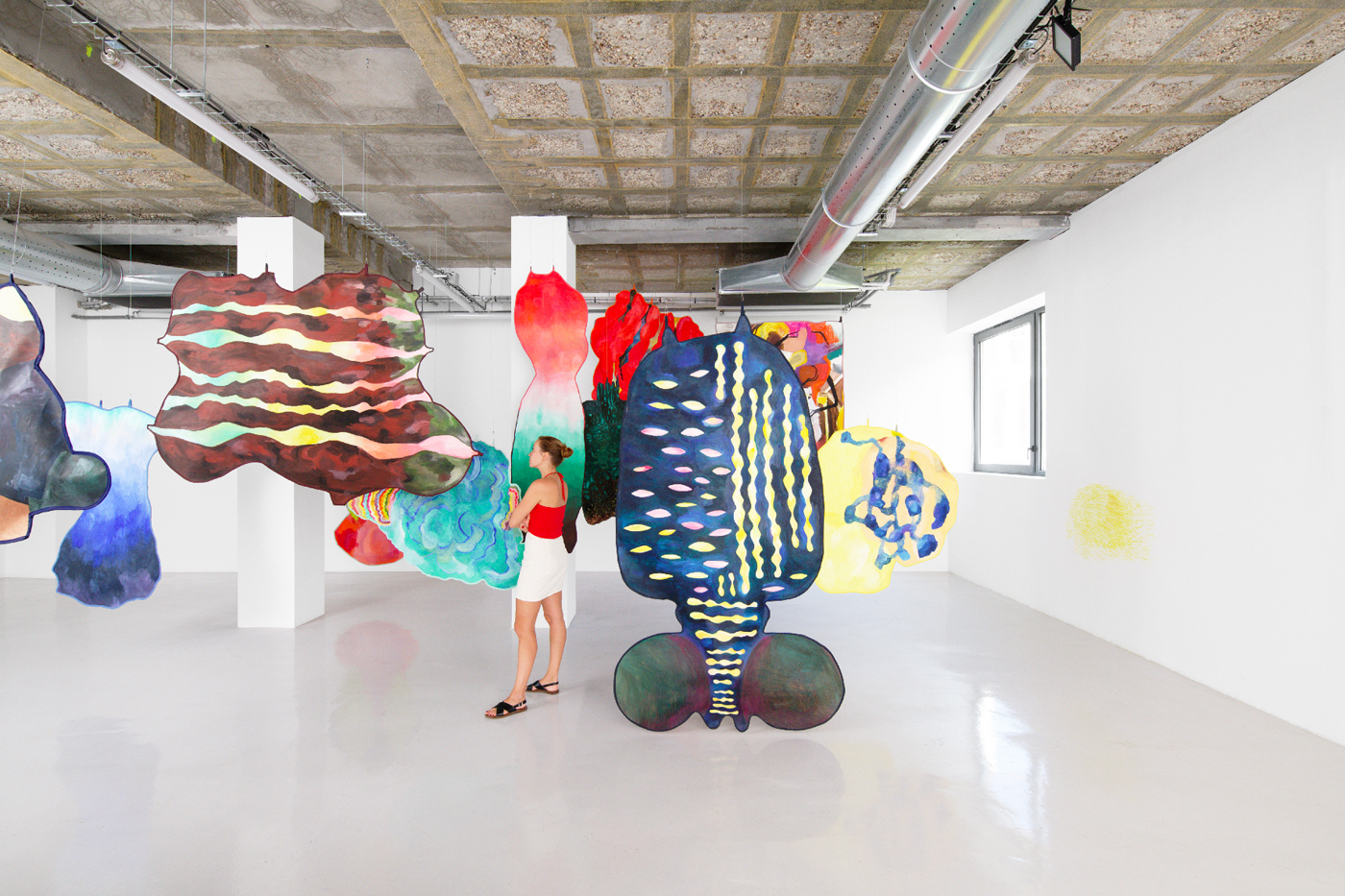
SOLO SHOW MARINA DE CARO
Exhibition view

SOLO SHOW MARINA DE CARO
Exhibition view
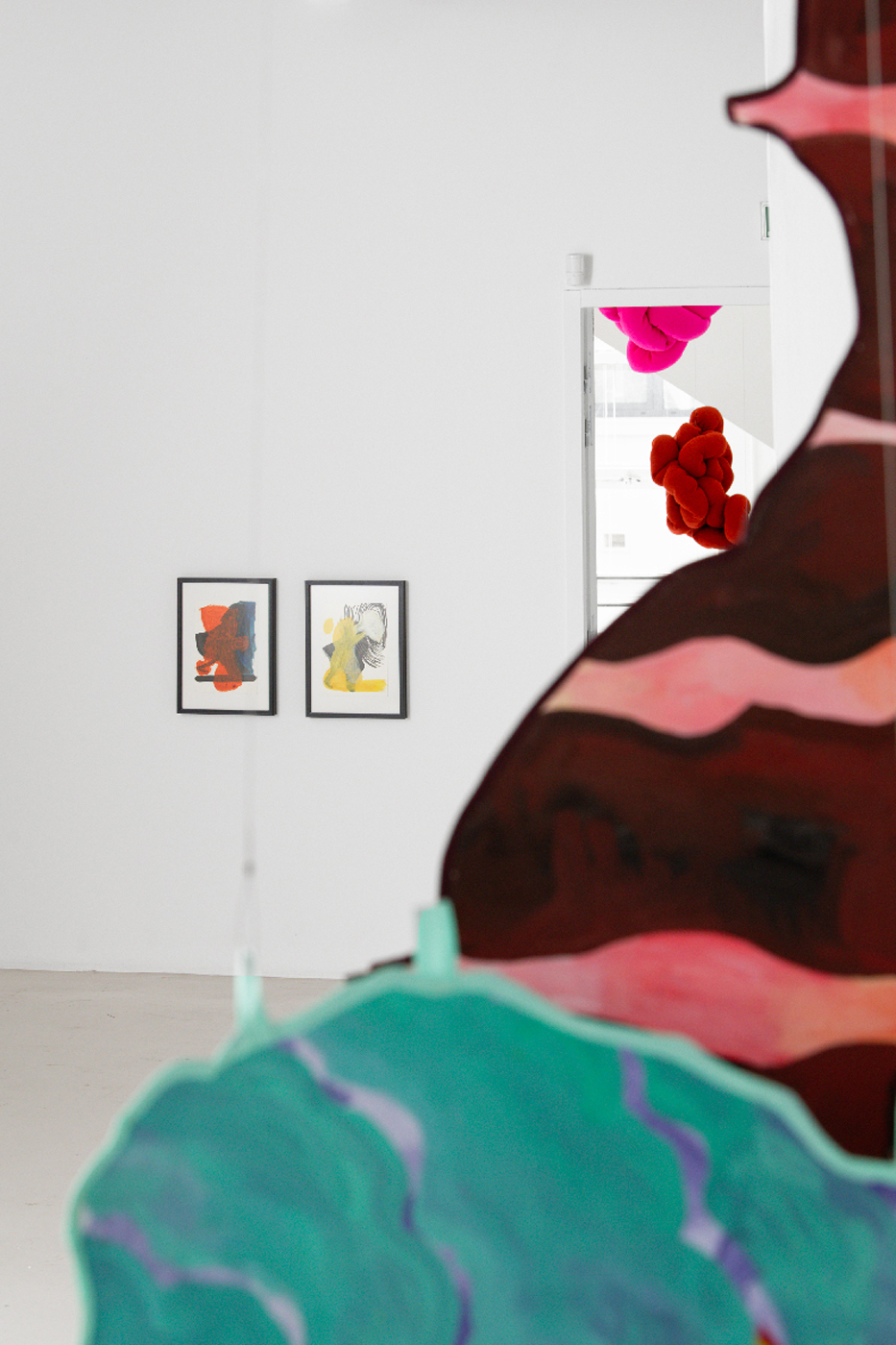
SOLO SHOW MARINA DE CARO
Exhibition view

SOLO SHOW MARINA DE CARO
Exhibition view
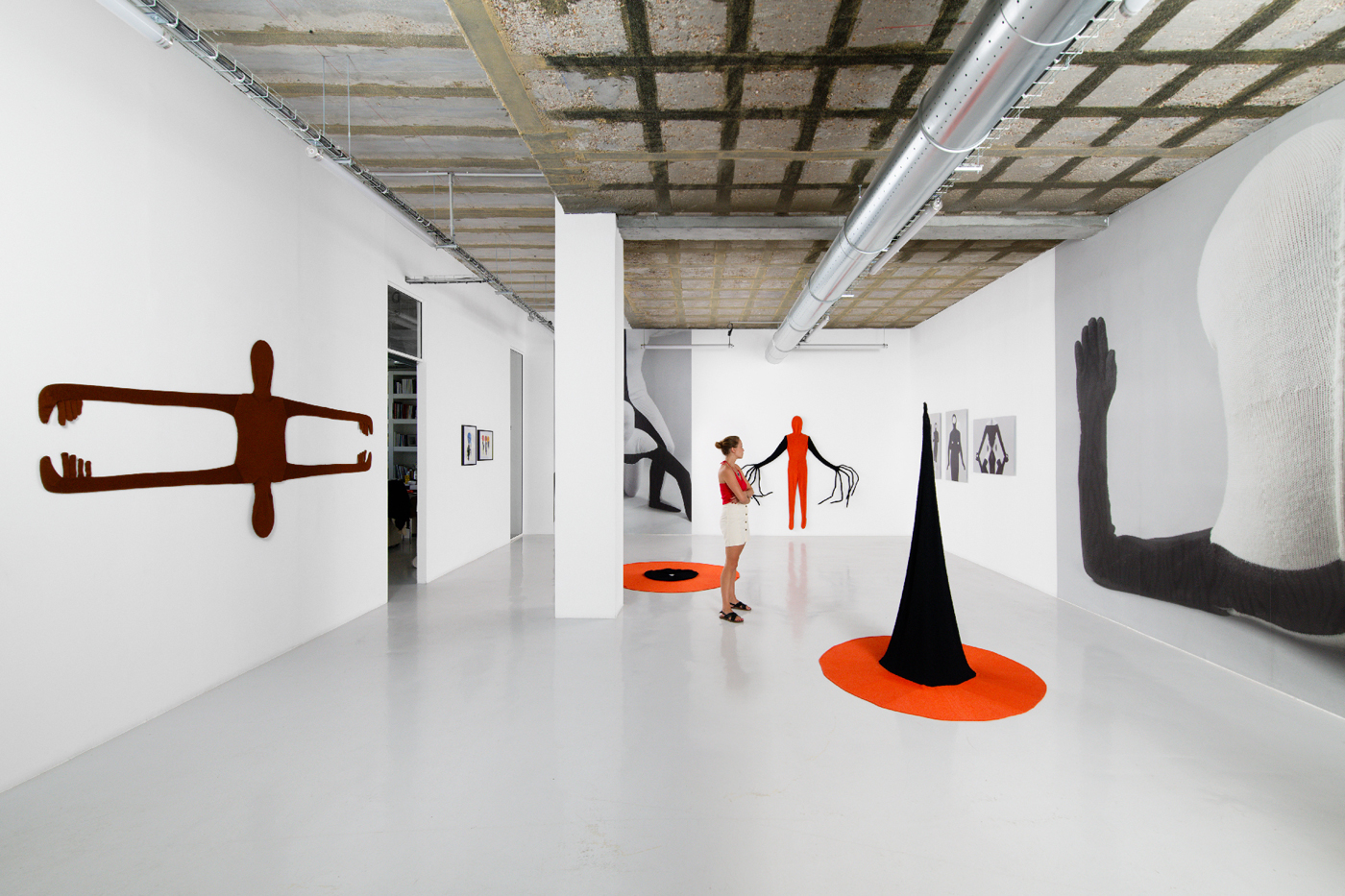
SOLO SHOW MARINA DE CARO
Exhibition view
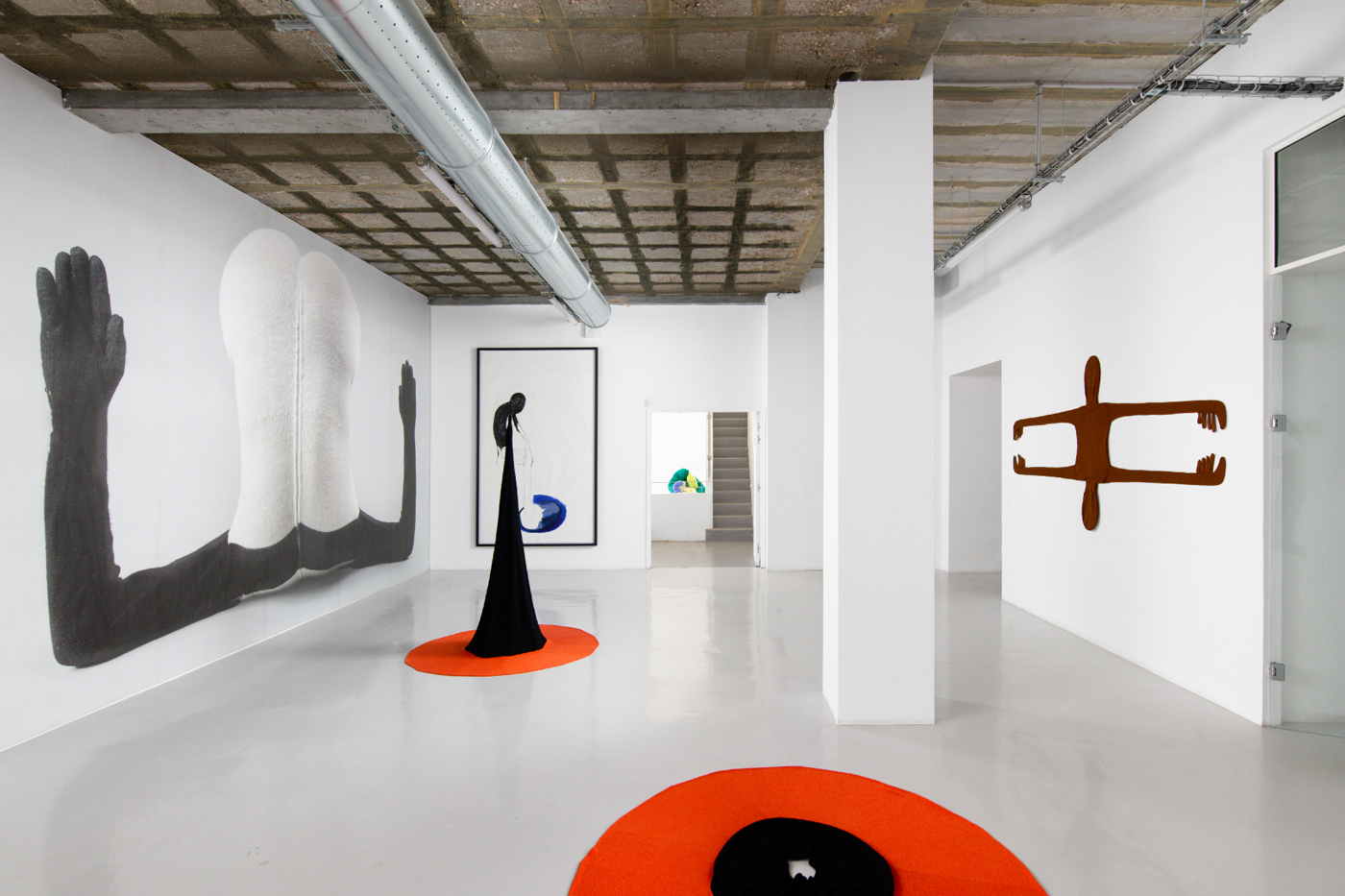
SOLO SHOW MARINA DE CARO
Exhibition view
PREVIEW SUNDAY 10 SEPTEMBER, 14H - 18H
“I think with the body, I draw with the body, my hands have eyes that spit out lines, forms, strings and relationships; the images that come out of my hands imagine themselves. My body kneads the world.”* Marina De Caro is an Argentine plastic artists from Buenos Aires, one of the most influential Latin American artist of her generation. She inhabits the world as a painter, illustrator, dancer, knitter, pedagogue, performer… She constantly reinvents space, she amplifies it through unknown gestures, freeing it from petrified geometries. She pushes back the limits of the expected to give what vibrates, invigorates, what surprises the norm, habits, the conventional, existence, what disconcerts.
The “desconcierto” is at the heart of her first large-scale exhibition in a French gallery, the In Situ-Fabienne Leclerc gallery. The verb disconcert exists in French and English but the noun is not as fertile as in Spanish. “I want to give the space of this word to the French language,” says Marina De Caro, because this word is, and has always been, the beating heart of her practice and her life. She tackles existence, objects, materials, situations with a primary amazement, a philosophical amazement through the body: a desconcierto that disorientes conventions and initializes roads that will perhaps lead nowhere but that contain in them the energy of movement, of departure. There is no need for a discovery for the path to take on value, no need for a competion to evaluate the rhythm, no need for an aim to start out…
“Movimento para guiar el desconcierto” [Movement to guide the desconcierto] is the title Marina De Caro has given to her exhibition at the In Situ gallery. On two floors, she has installed drawings (“Navettes,” 2023), ceramics, sculptures, knitted pieces, performance photographs (“Binario Lenguajes Secreto,” 1996). And in the stairwell, a glazed and privileged exhibition space, visible from the exterior, she reactives her “Hormiga Argentina” [Argentine ant] (2006), a group of 16 knitted wool tubes of different colors. A thousand and one versions are possible. They are filled with cotton, are malleable and can infinitely evolve. Marina De Caro has, in turn, created performances, dances, furniture, endless columns… Here, they are suspended in the air like weightless flowers. Topographic acrobatics, intensely colored navels, rhythmic modulations… It is up to each of us to let ourselves be disconcerted and to be taught by the fertility of his or her own imagination. Nothing is frozen, nothing is exclusive in Marina De Caro’s works. “Sensitivity is a kind of knowledge. The body disconcerts thought and experience disconcerts the body. The norm is a single response. I look for new ways of being in the world,” she says.
When the visitor looks up going up the gallery’s staircases and the multicolor forms make the space undulate, the body is in charge. It invents a new relationship to the site, a new knowledge exerts a tension and “you can no longer close the door,” she says. It is a matter of appropriating a gesture in the infinitive mode, it will be conjugated, will begin to build a knowledge and will enrich the usual, the daily with a new freedom.
The textile affinities with string, cloth, sewing bring her close to Louise Bourgeois. Even if Marina De Caro’s universe is very different from that of the “mother of spiders,” what they have in common is that they both work starting from emotions (Marina De Caro called one of her previous exhibitions “Tierra de las emociones perdidas,” 2021 [The Earth of lost emotions], changing materials depending on what she wishes to say, creating metaphors starting from these materials and having drawing as an active core.
“I materialize my desire through drawing. For me, drawing is a familiar means for putting my body in order. It is a ritual for me.” On the upper floor of the gallery, a series of oil drawings is suspended (“Navettes,” 2023). They invite the visitors to make their way. The forms of color of course will bring to mind art history and the cut-out papers of Henri Matisse, but here, one enters the drawing, creating a sensitive, singular, organic, sinuous, multidirectional itinerary through it. In order to be freed from perspective, that single vanishing point established during the Renaissance. A single viewpoint is not sufficient for the eyes and the body. These drawings invite us to multiply the centers going as far as their dilution, to invent one’s own vision, to make one’s way randomly and to invent arrangements, territories, ways of perceiving.
Like form, color is a resource-tool to explore sensations, unusual ideas, never yet perceived, never yet heard. Color is an energy whose gush is hindered by symbolic preconceived ideas, crystalized by those industrial color charts. “But color is an identity that moves, like all identities,” says Marina De Caro. “It is a sensibility that involves the body, that is nourished by the differences in experiences, light, geographies. Color does not exist alone, it has a community behavior. It changes according to what surrounds it. And it is not platonic, it affects a body, an object, a situation…”
This stance led Marina De Caro to found chronoactivism, an artistic movement that nourishes color in its symbolic, political, athletic, sensitive, emotive potentials. Color gushes out in a large number of the artist’s chromoactivist works. Drawings (“Rose comme un volcan,” 2019, “J’ai découvert qu’elle était et pleurait turquoise,” 2023…); a multicolored ceramic floor whose vibrations of colors intensify walking (“Negro que mueve el univeso,” 2018); performances, a book, an exhibition at the Museo de los Immigrantes in Buenos Aires, 2018).
Colors of course evoke the theoretical contribution, in the 20th century of Wassily Kandinsky (“Of the spiritual in art, and in painting in particular,” 1910) and his “Music Room” (1931). But for Marina De Caro, color is corporeal before being spiritual: “I always look for the visitor’s body. His or her body, not the head!,” she says. Art is an experience, a crossing, a reinvention of oneself. For the Lyon Biennale in 2011, she created “Hombre semilla o el mito de lo posibile” [Seed man or the myth of the possible] (2011), a sculpture-installation instituting the myth of a new man, creators of new subjectivities and producer of concrete utopias.
The body is presence, as are movements in space. Dance is of central importance to Marina De Caro. She has danced since childhood with her aunt, a classical étoile in the Teatro Colòn troupe of Buenos Aires. She believes that creation always begins with questions on the body and movement: “How do our eyes travel through the images? How do our pores travel through the images? What is the relationship between the eyes and the skin? What is the relationship between the eyes, the nerves and the skin?”* Color, drawing, sculpture, knitting answer these questions.
Why the body? Because it is political. Freeing the body is freeing perception, it is making possible other solidarities, other movements, other explorations. Freedm is conquered, it is also demanded. Not being able to act in the singular, it is submitting oneself to the diktat of the norm, of the cadenced body.
This conquest of freedom is expressed by the importance given to pedagogy. It is an integral part of her artistic work. In 2009, she was the pedagogic curator of the 7th Biennal of the Mercosul, in Porto Alegre, in Brazil. She invited seven artists in residence and imagined a pedagogical methodology linked to their own artistic universe. One of them, for example, was based on the book The Prince by Niccolò Machiavelli with the artist and sociologist Diego Melero. "I took works that i thought had a strong pedagocial potential and I made them change the system. Thus the concepts of Machiavelli's The Prince gave rise to gymnastic movements. First of all, it is stupid to think that you'll learn something by staying seated on a chair in front of a small table," she says. Diego Melero liked the gymnastic exercices. Therefore, to understand the concepts developed by Machiavelli, he imagined exercises that were devoted to experimenting with strenght, power, the end that justifies the means... A book documents the workshop in which a gylnastic corresponds to each of Machiavelli's concepts.
This materialization of concepts is echoed in the micro-opera “El Univreso en un hilo” [The universe in a string], which she premiered in 2017 at the Teatro argentino de La Plata. She wrote its libretto and imagined the costumes and stage sets. Three women, Ofelia, Mélisande and Margarita, take part in a knitting workshop. They share their knowledge, their poetry, their imagination in order to create utopias. Their bodies act as a sound box for music, images, sounds and form a visual poem in which the voice is knitted like a string.
Art opens knowledge, freedom, the production of utopias, it permits presence, risk, experience. Art is one of the most precious tools to experiment with the freedom for which Marina De Caro is a tireless activist. It is our most invaluable good, she knows it intensely, she, who grew up in Argentina under the yoke of a military dictatorship.
Annabelle Gugnon
*Marina De Caro’s quotations are taken from a personal text that she wrote in 2022 and the other quotations are from the author’s interviews with her in August 2023.